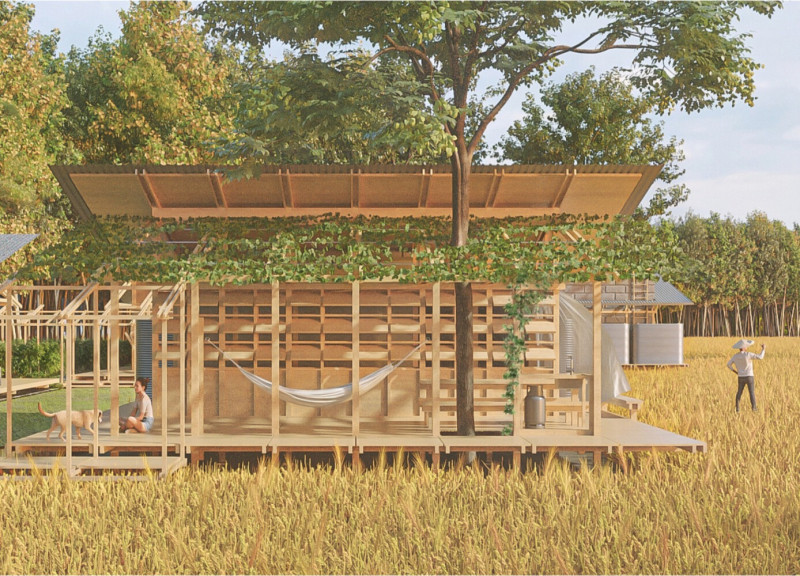5 key facts about this project
At its core, the project functions as a multi-purpose facility, accommodating a variety of activities. It is designed to support social gatherings, community events, and individual interactions, promoting a sense of inclusivity. The layout encourages connectivity between spaces, establishing an engaging flow that invites people to interact with both the building and each other. The arrangement of areas within the architecture reflects careful planning, maximizing usability while maintaining an open and inviting atmosphere.
A critical examination of the exterior reveals a façade that merges traditional and modern architectural forms. The use of materials is deliberate; concrete is prominent, providing both structural integrity and a minimalist aesthetic. Large glass panels are strategically placed to enhance natural light within interior spaces, creating a visual connection between the exterior and interior. Moreover, the integration of wooden elements softens the overall design, adding warmth and a tactile dimension that invites engagement.
Unique design approaches manifest in several ways throughout the project. One predominant feature is the incorporation of green building strategies. This reflects an awareness of environmental impact and an intention to promote sustainability. The design includes elements such as green rooftops, rainwater harvesting systems, and energy-efficient lighting solutions. By prioritizing ecological responsibility, the architecture not only serves its immediate users but also considers its broader environmental footprint.
The interplay of indoor and outdoor spaces is another noteworthy aspect of the design. The architecture employs transitional zones that blur the boundaries, allowing for natural flow and interaction with the surrounding landscape. Outdoor terraces and gardens are thoughtfully integrated, providing users with areas for relaxation and connection with nature. These spaces serve not only as extensions of the architecture but also as venues for community engagement and activity.
Attention to detail is evident in the design of individual spaces within the building. Each area is crafted to foster specific interactions, whether it be quiet contemplation, collaborative work, or social gathering. Materials such as stone and steel are utilized in specific sections to create visual interest and functional delineation among the various programmatic components of the project. For instance, acoustic panels are carefully integrated in certain environments to enhance sound quality and user comfort, showcasing a dedication to the sensory experience within the architecture.
The overall architecture of the project is characterized by its ability to adapt and respond to its users' needs through flexible design elements. Movable partitions allow for the reconfiguration of spaces to accommodate different functions, while smart technology integration promotes efficiency and enhances user experience. This foresight in design not only serves immediate functional requirements but also anticipates future demands.
Exploring the architectural plans, sections, and detailed designs will reveal more about this thoughtful project. Every element has been carefully considered to enhance comfort, usability, and sustainability. This project is a testament to the enduring principles of architecture that prioritize human experience, environmental responsibility, and community-building. Readers are encouraged to delve deeper into the project presentation to gain more insights into its architectural ideas and design nuances. Each layer of the design tells a story that reflects a commitment to creating spaces that resonate with their surroundings and the people who inhabit them.


























